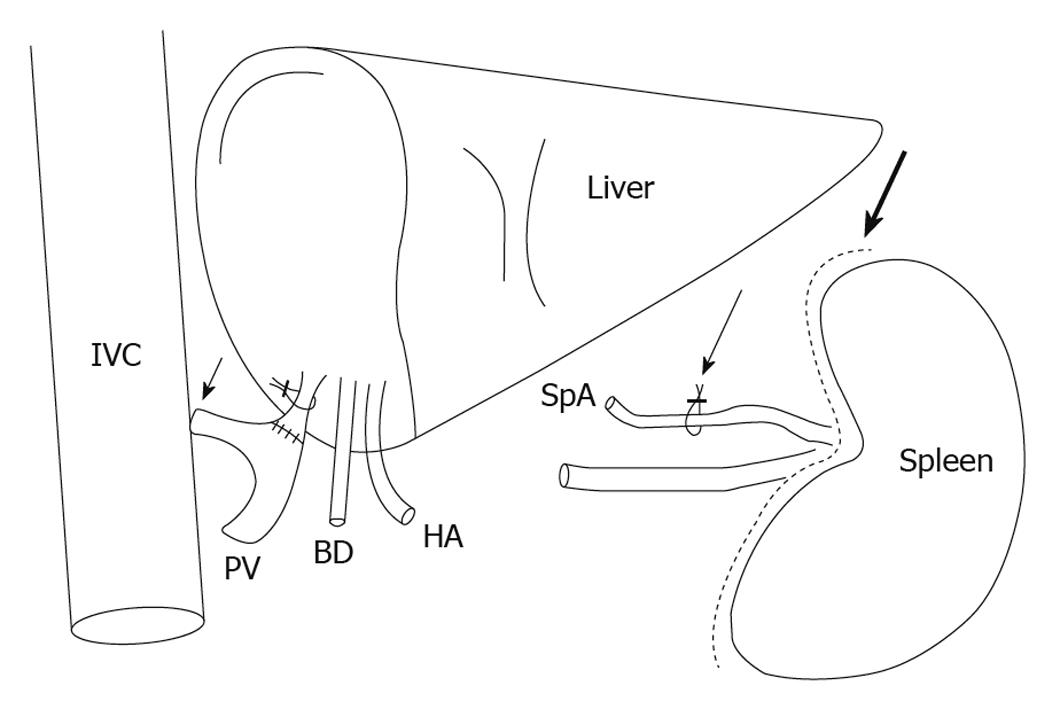Copyright
©2010 Baishideng Publishing Group Co.
World J Gastroenterol. Dec 28, 2010; 16(48): 6046-6057
Published online Dec 28, 2010. doi: 10.3748/wjg.v16.i48.6046
Published online Dec 28, 2010. doi: 10.3748/wjg.v16.i48.6046
Figure 1 Hepatic hemodynamics in normal and reduced-size livers.
A: Preoperative hepatic blood flow in a donor liver or before extended hepatectomy representing a normal portal vein blood flow-hepatic artery blood flow (PVBF/HABF) ratio of 2.5; B: As a consequence of portal hyperperfusion, hepatic arterial buffer response (HABR) leads to hepatic arterial hypoperfusion of reduced-size liver that is characterized by a dramatically increased PVBF/HABF ratio of 29; C: Surgical reduction of the portal venous inflow, for example, by splenectomy or hepatic artery ligation, leads to HABR-induced dilation of the hepatic artery and results in a reduced PVBF/HABF ratio of 22; D: Possible effects of pharmacological interventions to preserve hepatic artery supply. PVBF/HABF ratios are adopted from[59]. HA: Hepatic artery; IVC: Inferior vena cava; PV: Portal vein.
Figure 2 Surgical interventions for modulation of the hepatic inflow, showing the portocaval shunt (short arrow), ligation of the splenic artery (thin long arrow) and splenectomy (thick long arrow).
BD: Bile duct; HA: Hepatic artery; IVC: Inferior vena cava; PV: Portal vein; SpA: Splenic artery.
- Citation: Eipel C, Abshagen K, Vollmar B. Regulation of hepatic blood flow: The hepatic arterial buffer response revisited. World J Gastroenterol 2010; 16(48): 6046-6057
- URL: https://www.wjgnet.com/1007-9327/full/v16/i48/6046.htm
- DOI: https://dx.doi.org/10.3748/wjg.v16.i48.6046










